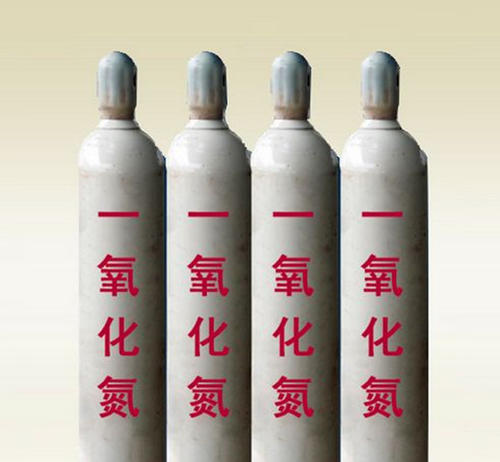A little knowledge of nitric oxide
Nitric oxide is a colorless odorless poisonous gas under normal temperature and pressure. It turns blue after liquefaction. Unstable at room temperature, according to the formula below slowly decompose into dark brown nitrogen dioxide. Pressurization accelerates its decomposition. It does not burn in air, but it helps to ignite.
The flammable range (at 1atm) of various gases in nitric oxide, which is immediately oxidized in air and then rapidly converted to a mixture of and. Reacts with halogens to form nitrosyl compounds, which react with sulfur dioxide. Dangerous reactions can occur when mixed with fluorine, fluorine oxide, nitrogen chloride, and chlorine with traces of moisture. Thermal stability. Dry gases can be made of ordinary materials, but are corrosive in the presence of oxygen and moisture.
Nitric oxide is slightly soluble in water, but the dissolved aqueous solution can be slowly decomposed into the non-irritating, colorless gases nitrogen and nitrous gas.
Nitric oxide
1.use
Manufacture nitric acid, nitrating agent, oxidant, catalyst, acrylate polymerization inhibitor, standard gas, rocket fuel, flour bleach.
2.Toxicity
When the concentration of air neutralization mixture is 5ppm, there is obvious odor; Slight irritation of upper respiratory mucosa at 10~20ppm; More than 100ppm, quickly into the dangerous state. Nitric oxide is less active and can enter the bloodstream through the respiratory tract and lungs. It is easily oxidized into nitrogen dioxide, so the toxic effect of nitric oxide is mainly due to the strong toxicity of the converted nitrogen dioxide. In addition, nitric oxide itself oxidizes hemoglobin in the blood, turning it into methemoglobin, which can lead to suffocation. It also acts on the central nervous system, causing central palsy and spasms. In the human body, pure nitric oxide as long as 50ppm can appear obvious toxic symptoms. The main symptoms are cough, sore throat, fatigue, general weakness, loss of appetite, nausea, headache, constipation, pulmonary edema, inability to breathe deeply, suffocation, etc.
3.Safety protection
Nitric oxide is oxidized in air, which in turn hydrolyzes to nitric acid and nitrous acid, so that at room and high temperatures, moist NO corrodes most metals. Materials that can be used at room temperature include carbon steel, stainless steel, aluminum alloy, Monel, corrosion resistant nickel-based alloy, tungsten, molybdenum, and polytetrafluoroethylene, polytrifluoroethylene (PTFE), polyvinyl chloride (PVC), polyethylene, plain glass, borosilicate glass, and quartz.
All equipment used for NO should be dehydrated by baking and vacuuming prior to use.
When gas leaks, direct the gas into a mixture of caustic soda and slaked lime, or place the leaking container in a fume hood.





 Facebook
Facebook YouTube
YouTube LinkedIn
LinkedIn Twitter
Twitter